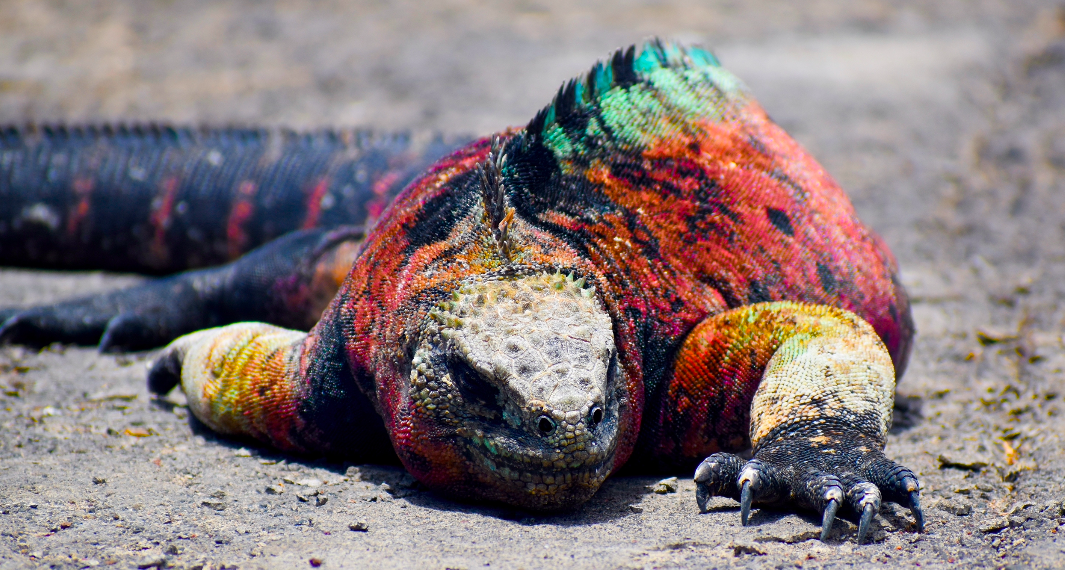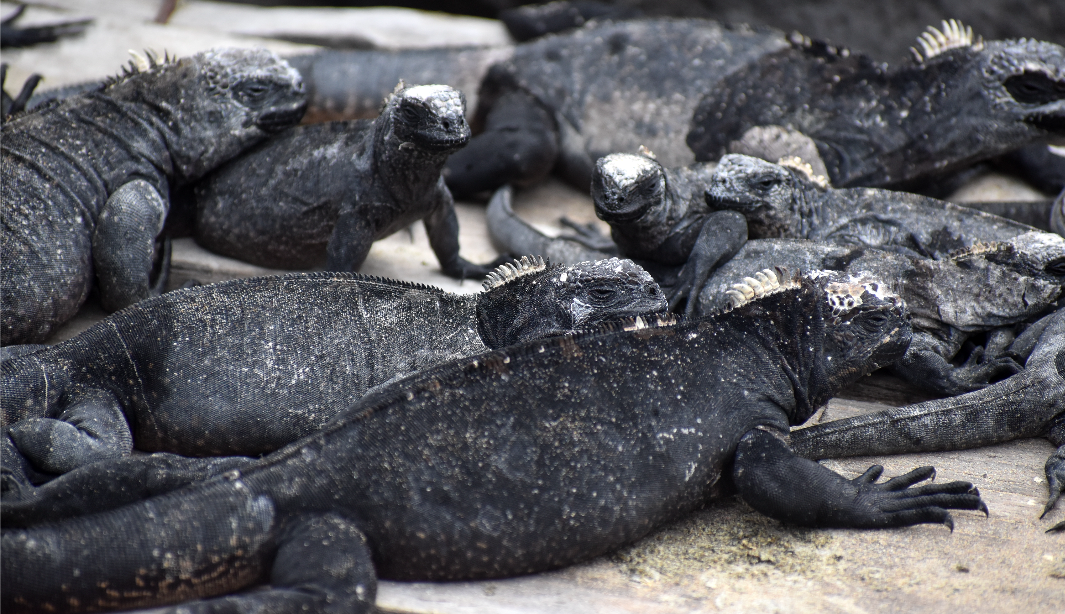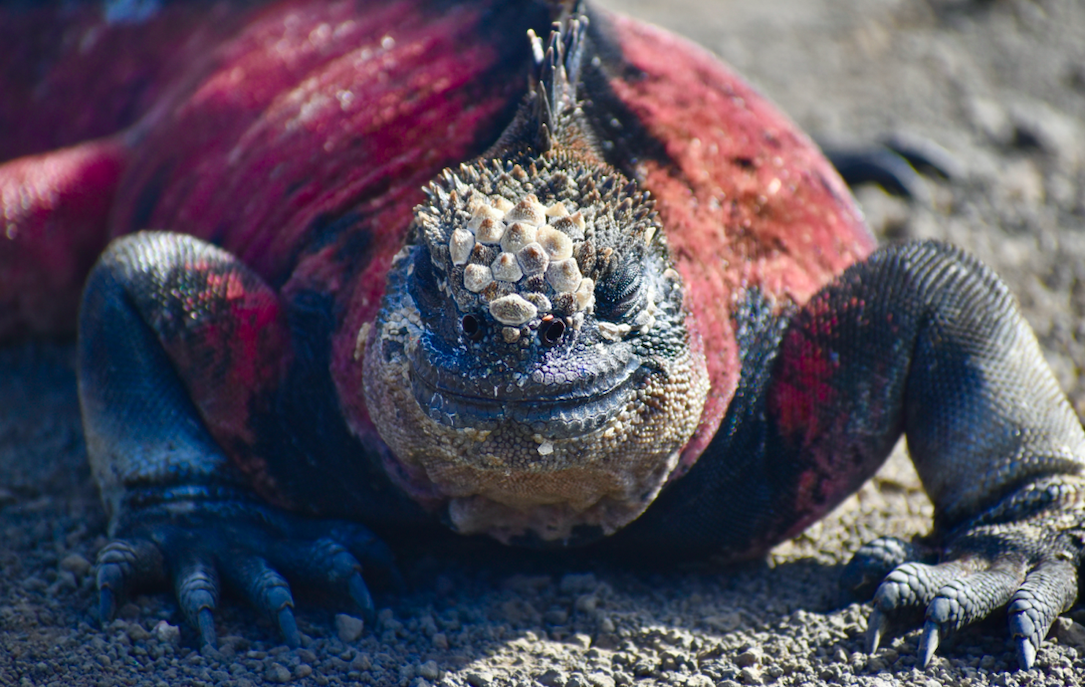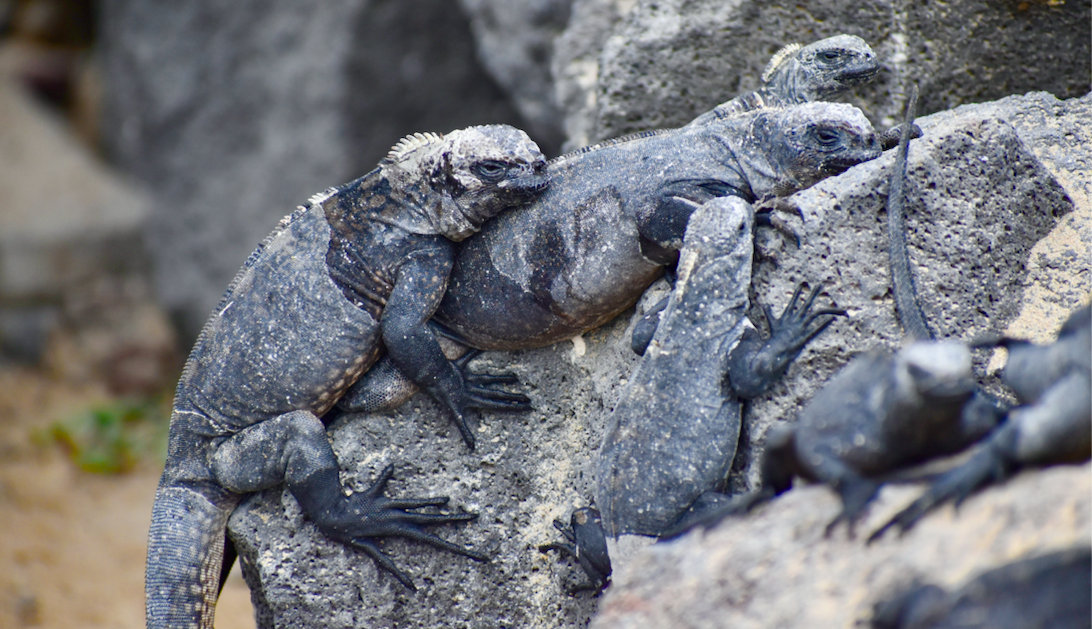Guide to the Galapagos Islands
Marine Iguanas
Marine Iguanas are another species in the Galapagos that you will see without needing to go to a particular location. That being said, some locations have more iguanas than others.
Casa Rosada, Isabela
Casa Rosada is a beachfront house and a bar owned by a friend of mine who allows allows marine iguanas to breed in her backyard. To get there, you follow the main road parallel to the ocean going west. You can follow the road or follow along on the main beach going west. It is the only pink house and it is at the very western end of the beach. You can see hundreds of juvenile marine iguanas hanging out in her small yard and climbing on her house walls! Her house is also very close to the beginning of the path known as Posa Salinas where you can walk among flamingos on your way to the tortoise breeding center.
Loberia, San Cristobal
Loberia is a long beach with a long sandy strip to lay with sea lions, a rocky intertidal with great tidepools, and a 30 minute walk to a cliff lookout with lots of birds. To get here, you can walk along city streets for approximately 45 minutes while following directions on Google Maps. If you don't want to walk, you have the option of taking a taxi (look for the white truck taxis), which will cost you $3 each way.
Lobería has a great snorkeling area that is designated by buoys. Do not pass the buoys because the current is very strong, making it unsafe to snorkel outside of the buoys. Regardless of the limited area, there are typically many large green sea turtles hanging out on the ocean floor or swimming around and feeding. I have also seen a spotted eagle ray and swimming sea lions at this site. There are also lots of parrot fish and triggerfish which you might see feeding on sea urchins.
Lobería has an active sea lion breeding site, so you can find many adorable baby sea lions lying on the beach or playing in shallow rock pools. The rocks also act as a home to many marine iguanas.
At this beach, you can also walk around the rocky intertidal if you have close toed shoes or secured sandals such as chacos. The rocks are slippery, so be careful! The tidepools are best viewed at low tide. You also have an option to do a 30 minute walk up to a sea cliff where you can see birds such as swallow tailed gulls, frigate birds, blue footed boobies, and red billed tropic birds. To find the path, walk along the beach from the entrance all the way to the end of the beach, which will turn into a dirt path leading you to the lookout. You will see many marine iguanas along the path, so watch your step!
Playa Baquerizo, San Cristobal
Baquerizo is a secluded beach that requires an hour long hike. To get there, follow directions to Playa Mann or USFQ on Google Maps, then make a right once you pass the school. The road continues to the left towards the Interpretation Center. You will enter the interpretation center and follow the signs along the path to Tijeretas. Continue up the stairs, and eventually you will meet with the dirt path that will take you to to Baquerizo Beach.
Baquerizo has a great amount of biodiversity, from algae to sharks. It is a great place to see turtles, beautiful fish, and it is the only place where I have been able to watch marine iguanas feeding underwater. Local fisherman also clean their fish just offshore, which can attract sharks, so if lucky, you can spot a Galapágos or Black Tipped Reef Shark.
Note: Be sure to bring good walking shoes! Chacos, Tevas, or closed toed shoes are great, but flip flops will not be a great option because you will have to walk on lava rocks at times.



